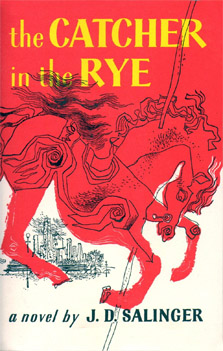The Catcher in the Rye by J. D. Salinger
The mark of the immature man is that he wants to die nobly for a cause, while the mark of the mature man is that he wants to live humbly for one.
– Wilhelm Stekel

The Catcher In The Rye is a remarkable book in that one can read it at different times in one’s life and have completely different impressions of the main character, Holden Caulfield. I read this when I was eighteen, and when I was twenty-five, and I plan on reading it once again when I’m older. When one is a teenager, Holden may be relatable, as he struggles with school, social isolation, and making connections with his peers. Though when one is an adult, Holden can come of as an arrogant, insufferable, know-it-all. Though if you read between the lines of his rambling inconsistencies, Holden is an emotionally damaged young man, whose disdain for “phonys” and wariness of homosexuals, who he calls “flits”, and his deep mistrust of almost everyone even though he longs for personal connection, paint a portrait of one who has been abused or ignored for most of his life. His parents are uncaring since the death of his brother, and he simply cannot relate to his more “normal” classmates, who socialise in the regular teenage way and have aspirations and dreams beyond school, some direction in their lives.
The way Salinger wrote Holden to elicit these types of different emotional responses from readers, in a first person narrative, is what makes this book a masterpiece. Holden cannot stay a teenager, but is incapable of becoming an adult, caught in a melancholy limbo between two vastly different worlds. If you read this book, please keep in the back of your mind that beyond your first impressions of Holden, there is a much more complex history, which can also be applied to anyone you may meet throughout your life.